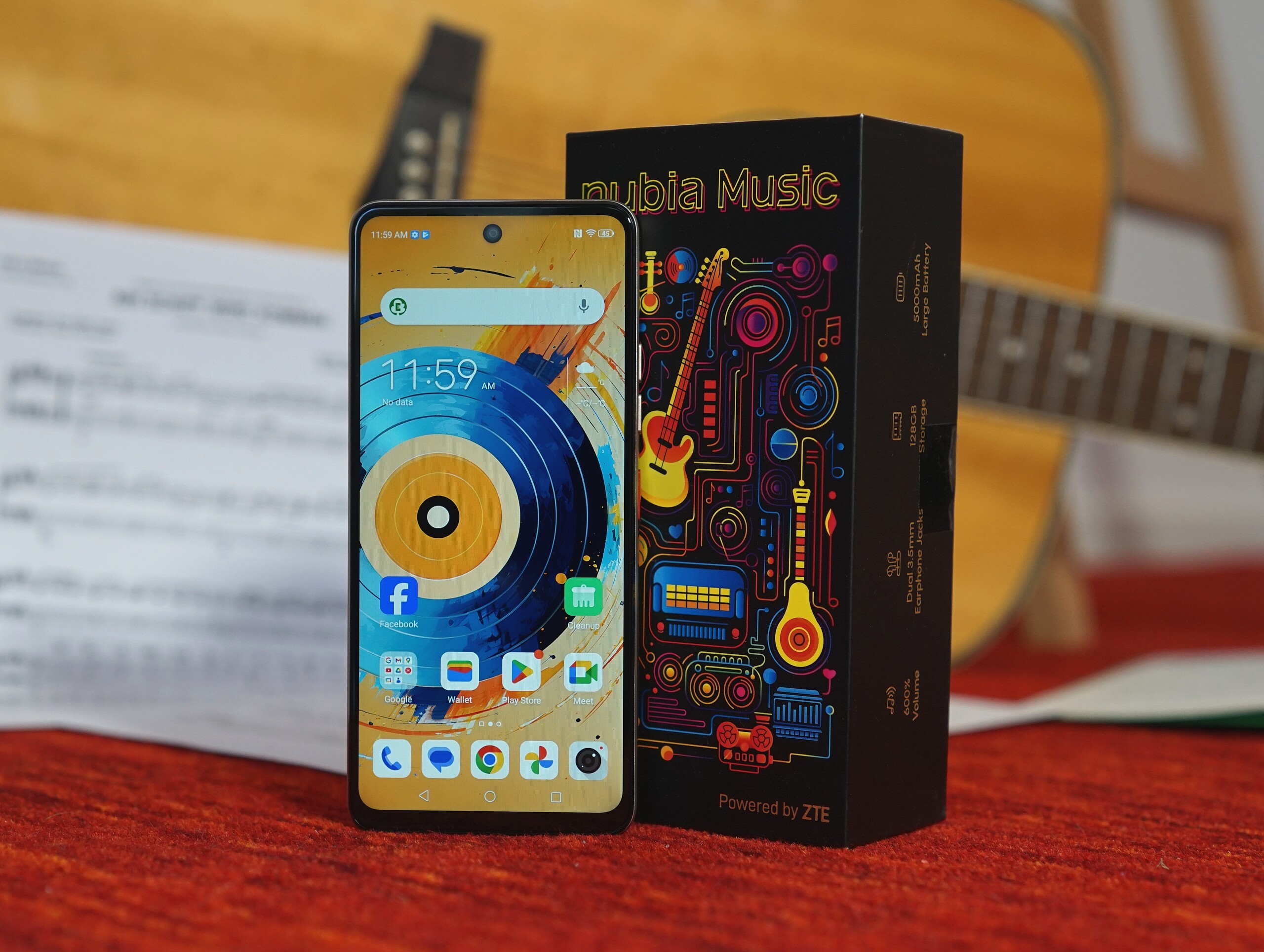
ZTE Nubia Music review - DJ phone with a pop art look and dual headphone jack
Louder, louder!
ZTE wants to offer a lot of sound for little money with the Nubia Music. It costs less than 150 euros and comes with extra-loud speakers, lighting effects when playing music, a graphic equalizer, and two headphone jacks. But does all this really make the smartphone the king of music?Florian Schmitt, 👁 Florian Schmitt, ✓ Anton Avdyushkin (translated by DeepL / Ninh Duy) Published 🇩🇪 🇫🇷 ...
Verdict
Who would have thought: The ZTE Nubia Music offers exceptional features for music fans for less than 150 euros: starting with the really cool design, the comprehensive DTS software for the sound settings and the high volume, and the dual audio jack. A radio receiver is also on board so that you can enjoy music even without the Internet.
The loudspeaker can get loud but then also has a treble-heavy effect. With the equalizer, however, you can actually elicit quite a full sound at a slightly lower volume. There could have been a few more Bluetooth audio codecs, but the most common options and options for Hi-Res audio playback are available.
Of course, ZTE also had to make some savings in order to keep the price so low: The phone comes without 5G, only supports WiFi 4, and has to do without a brightness sensor. The processor is also quite slow and it takes time to charge the battery. At least it comes with the right charger, which is now unusual even for very expensive phones.
If you want to use the ZTE Nubia Music as your everyday smartphone, you will have to live with some limitations. However, if you like listening to music, want comprehensive sound settings, like the design, and enjoy listening to music together via two headphones, the Nubia Music is a decent replacement for a dedicated music player and also has the advantages of a smartphone.
We would like to see a higher-quality sister model in the future that perfects the really good approaches of Nubia Music with better components and escapes the cost pressure.
Pros
Cons
Price and availability
Actually priced by the manufacturer at just under 150 euros, the ZTE Nubia Music is available at much lower prices from online retailers:
At the time of testing, the smartphone was already available for 110 euros, for example at galaxus.de. You have to pay a few euros more at amazon.de.
Possible competitors in comparison
Image | Model / Review | Price | Weight | Drive | Display |
|---|---|---|---|---|---|
| ZTE Nubia Music UNISOC SC9863A ⎘ PowerVR GE8322 / IMG8322 ⎘ 4 GB Memory, 128 GB eMMC | Amazon: 1. $19.19 Bruni Screen Protector compa... 2. $7.99 Lucyliy (3 Pack) Compatible ... 3. $7.99 Lucyliy (3 Pack) Compatible ... List Price: 149€ | 199 g | 128 GB eMMC Flash | 6.60" 1612x720 267 PPI IPS | |
| Xiaomi Redmi 14C Mediatek Helio G81 Ultra ⎘ ARM Mali-G52 MP2 ⎘ 4 GB Memory, 128 GB eMMC | Amazon: List Price: 150€ | 211 g | 128 GB eMMC Flash | 6.88" 1640x720 260 PPI IPS | |
| Motorola Moto G24 Mediatek Helio G85 ⎘ ARM Mali-G52 MP2 ⎘ 8 GB Memory, 128 GB eMMC | Amazon: List Price: 150€ | 181 g | 128 GB eMMC Flash | 6.56" 1612x720 269 PPI IPS | |
| HMD Pulse Pro Unisoc T7200 (T606) ⎘ ARM Mali-G57 MP1 ⎘ 6 GB Memory, 128 GB UFS 2.1 | Amazon: 1. $6.85 beukei (3 Pack) Designed for... 2. $6.80 KLWAINM [3 Pack] Tempered Gl... 3. $7.59 Anoowkoa 2 Pack for HMD Puls... List Price: 179€ | 196 g | 128 GB UFS 2.2 Flash | 6.65" 1612x720 265 PPI IPS |
Table of Contents
- Verdict
- Specifications
- Case & features - Colorful smartphone
- Communication and operation - Unfortunately only WiFi 4
- Software and sustainability - Uncertain update situation
- Cameras - Partly with image errors
- Display - Recognizable blue cast
- Performance, emissions and battery life - Good sound and decent runtimes
- Notebookcheck overall rating
Specifications
Case & features - Colorful smartphone
The ZTE Nubia Music stands out: The back is either yellow or has a chic pop art design, but is always colorful. The phone is therefore not suitable for every conference table, but its design alone puts you in a good mood in a relaxed atmosphere.
The back is made of plastic, and the camera module is slightly raised by a transparent plate, which also houses the huge speaker with a vinyl record design. In the middle is a DTS-X logo that lights up to the rhythm of the music.
The design and stability of the phone are very good, only very strong pressure gets through to the screen.
NFC for wireless payments is available. The phone is supplied with 128 GB mass storage and 4 GB RAM.
The memory can be expanded via microSD cards, although one of the two SIM slots is then occupied. The card reader only works moderately fast in the test with our reference microSD card Angelbird V60.
| SD Card Reader - average JPG Copy Test (av. of 3 runs) | |
| HMD Pulse Pro (Angelbird V60) | |
| Motorola Moto G24 (Angelbird V60) | |
| Xiaomi Redmi 14C (Angelbird V60) | |
| Average of class Smartphone (5.72 - 58.9, n=69, last 2 years) | |
| ZTE Nubia Music (Angelbird V60) | |
Cross Platform Disk Test (CPDT)
Communication and operation - Unfortunately only WiFi 4
If you connect to the Internet with the ZTE Nubia Music, you should not expect excessively high speeds: WiFi 4 is the fastest WiFi standard that the device offers. In our test with the Asus ROG Rapture AXE11000 reference router, we only measured very slow transfer rates: When sending, it is less than 60 MBit/s and the ZTE Nubia Music cannot keep up with similarly expensive smartphones when receiving either.
The data rates are generally sufficient for music streaming, even when streaming Hi-Res audio. However, the data rate can occasionally drop, but this is not noticeable when playing music due to the buffering. Only once during the test did we experience a brief dropout during playback.
You can't use the fastest current standard via the mobile networks either: 4G is the maximum here. There are also only very few frequencies available, which means you often cannot use the mobile Internet when traveling abroad. Reception was also shaky in our tests, especially in difficult situations such as between closely spaced houses.
The touchscreen is easy to use, but the very slow SoC often causes stutters and delays. A fingerprint sensor is integrated into the standby button on the right, which reliably recognizes fingerprints once they have been applied. Unlocking takes place with a slight delay. The user also can use face unlock but this is done in a 2D process via the front camera, making it comparatively easy to manipulate.
Software and sustainability - Uncertain update situation
The smartphone was originally delivered with Android 13 but was updated to version 14 during our test. However, this is still a year behind schedule, as many phones already receive Android 15.
Even high-end products are usually only updated by ZTE for one year. There is no guaranteed update period for Nubia Music, but you shouldn't expect the software to be available for too long. After all, current Android phones are still supplied with basic security updates via Google Play updates, even if the manufacturer does nothing.
The manufacturer only provides general information on the sustainability of the device, for example, that there is a strategy to produce climate-neutrally by 2050. There is no information about the materials used in the product or the CO2 emissions during production. The packaging still contains plastic film, so there is hardly any evidence of a commitment here either.
Cameras - Partly with image errors
There is a 50-megapixel camera on the back of the smartphone. Although a second lens is visible, it is only used to improve bokeh effects when taking pictures. The main camera takes passable pictures outdoors, but some details are lost in dark and bright areas with high contrasts.
The morning light mood is captured quite well, but the image then appears blurred in detail. In low light and high contrasts, the subject itself is easily recognizable, but interestingly, a curious error occurs when the image is processed: the enlarged structure of the background is appended to the left of the image.
In the lab, the main camera could provide a somewhat higher contrast image, but the sharpness is decent. At 1 lux illumination, nothing is recognizable in the pictures.
Videos can be recorded at a maximum of 1080p and 30 fps. The autofocus works relatively slowly, but the general image quality is okay for the price range.
The selfie camera on the front has a resolution of 5 megapixels. Photos taken with it are quite grainy and blurred and even have image errors in bright areas.
Image comparison
Choose a scene and navigate within the first image. One click changes the position on touchscreens. One click on the zoomed-in image opens the original in a new window. The first image shows the scaled photograph of the test device.
Main cameraMain cameraLow Light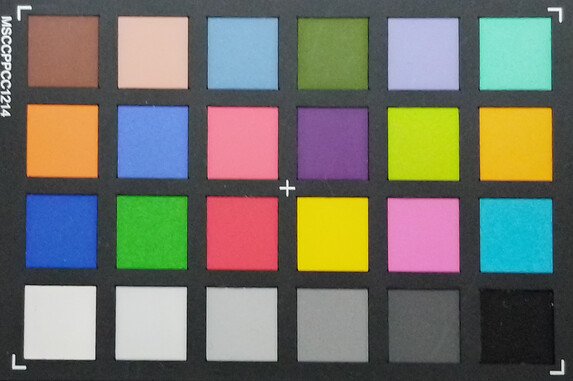

Display - Recognizable blue cast
The screen of the ZTE Nubia Musik has a resolution of 1,612 x 720 pixels, which is standard for the class, and is also sufficiently bright with up to 524 cd/m² in our tests. This means that the smartphone can also be used outdoors, but on very bright days it is better to use it in the shade.
In our tests with the CalMAN software and the spectrophotometer, a clear blue cast is visible, which also distorts the color representation.
The IPS screen offers a frame rate of up to 90 Hz and can therefore display smooth scrolling. We did not notice any PWM flickering.
| |||||||||||||||||||||||||
Brightness Distribution: 94 %
Center on Battery: 514 cd/m²
Contrast: 1389:1 (Black: 0.37 cd/m²)
ΔE ColorChecker Calman: 5.21 | ∀{0.5-29.43 Ø4.78}
ΔE Greyscale Calman: 5.3 | ∀{0.09-98 Ø5}
91.8% sRGB (Calman 2D)
Gamma: 2.212
CCT: 7903 K
| ZTE Nubia Music IPS, 1612x720, 6.6" | Xiaomi Redmi 14C IPS, 1640x720, 6.9" | Motorola Moto G24 IPS, 1612x720, 6.6" | HMD Pulse Pro IPS, 1612x720, 6.7" | |
|---|---|---|---|---|
| Screen | 11% | 1% | 16% | |
| Brightness middle (cd/m²) | 514 | 422 -18% | 521 1% | 501 -3% |
| Brightness (cd/m²) | 508 | 401 -21% | 510 0% | 470 -7% |
| Brightness Distribution (%) | 94 | 89 -5% | 93 -1% | 89 -5% |
| Black Level * (cd/m²) | 0.37 | 0.3 19% | 0.39 -5% | 0.17 54% |
| Contrast (:1) | 1389 | 1407 1% | 1336 -4% | 2947 112% |
| Colorchecker dE 2000 * | 5.21 | 3.21 38% | 4.83 7% | 5.21 -0% |
| Colorchecker dE 2000 max. * | 8.64 | 6.29 27% | 7.71 11% | 8.79 -2% |
| Greyscale dE 2000 * | 5.3 | 2.9 45% | 5.3 -0% | 6.3 -19% |
| Gamma | 2.212 99% | 2.382 92% | 2.111 104% | 2.297 96% |
| CCT | 7903 82% | 6338 103% | 7021 93% | 8524 76% |
* ... smaller is better
Screen Flickering / PWM (Pulse-Width Modulation)
| Screen flickering / PWM not detected | |||
In comparison: 53 % of all tested devices do not use PWM to dim the display. If PWM was detected, an average of 8111 (minimum: 5 - maximum: 343500) Hz was measured. | |||
Display Response Times
| ↔ Response Time Black to White | ||
|---|---|---|
| 26.7 ms ... rise ↗ and fall ↘ combined | ↗ 13.9 ms rise | |
| ↘ 12.8 ms fall | ||
| The screen shows relatively slow response rates in our tests and may be too slow for gamers. In comparison, all tested devices range from 0.1 (minimum) to 240 (maximum) ms. » 66 % of all devices are better. This means that the measured response time is worse than the average of all tested devices (20.2 ms). | ||
| ↔ Response Time 50% Grey to 80% Grey | ||
| 40.2 ms ... rise ↗ and fall ↘ combined | ↗ 23.2 ms rise | |
| ↘ 17 ms fall | ||
| The screen shows slow response rates in our tests and will be unsatisfactory for gamers. In comparison, all tested devices range from 0.165 (minimum) to 636 (maximum) ms. » 62 % of all devices are better. This means that the measured response time is worse than the average of all tested devices (31.6 ms). | ||
Performance, emissions and battery life - Good sound and decent runtimes
ZTE wanted to save money on its music smartphone and is using an SoC that was already installed in entry-level smartphones in 2021: the Unisoc 9863A. In everyday use, the low performance is noticeable in the often sluggish system and also in the benchmarks, especially in comparison to similarly priced smartphones.
Nevertheless, there is hardly any heat build-up on the device's casing and no throttling of the SoC is noticeable in the 3DMark stress tests.
The speaker is of course important for a music smartphone. It is located at the back of the casing and looks like a vinyl record. It actually offers a decent sound at maximum volume, which clearly outperforms other smartphones in its price range. If you press the volume up button again, a boost is activated, which increases the volume even further. The speaker then becomes noticeably louder again but also sounds a little treble-heavy.
It's a good thing that the DTS software is available on the smartphone, where you can make extensive sound settings and, with a little trial and error, you can actually achieve a sound that you would never have expected from a smartphone in this price range.
If you still prefer to connect headphones or speakers, you can use two 3.5 mm jack ports. These are close together, but most of the plugs we tried could be plugged in at the same time. External sound devices can also be connected via Bluetooth. The most common Bluetooth audio codecs are available for this, but you would have expected more unusual variants for an explicit music phone.
The ZTE Nubia Music's battery has a capacity of 5,000 mAh and thus achieves runtimes of up to 15:18 hours in our WLAN test. This is enough for a day of use without charging, and economical users will probably manage longer. If the smartphone does need to be plugged in, the charging process can take up to 3 hours. The reason for this is the maximum charging power of 10 watts. Nevertheless, a charger is included, as well as a wide range of other accessories.
| PCMark for Android - Work 3.0 | |
| Average of class Smartphone (4507 - 28557, n=188, last 2 years) | |
| Motorola Moto G24 | |
| Xiaomi Redmi 14C | |
| HMD Pulse Pro | |
| ZTE Nubia Music | |
| Average UNISOC SC9863A (4436 - 5187, n=2) | |
| Octane V2 - Total Score | |
| Average of class Smartphone (2228 - 121337, n=200, last 2 years) | |
| Motorola Moto G24 | |
| Xiaomi Redmi 14C | |
| HMD Pulse Pro | |
| ZTE Nubia Music | |
| Average UNISOC SC9863A (3111 - 6015, n=4) | |
| Geekbench AI | |
| Single Precision TensorFlow NNAPI 1.2 | |
| Average of class Smartphone (51 - 2472, n=54, last 2 years) | |
| ZTE Nubia Music | |
| Average UNISOC SC9863A (n=1) | |
| Half Precision TensorFlow NNAPI 1.2 | |
| Average of class Smartphone (51 - 9453, n=54, last 2 years) | |
| ZTE Nubia Music | |
| Average UNISOC SC9863A (n=1) | |
| Quantized TensorFlow NNAPI 1.2 | |
| Average of class Smartphone (123 - 13084, n=54, last 2 years) | |
| ZTE Nubia Music | |
| Average UNISOC SC9863A (n=1) | |
| ZTE Nubia Music | Xiaomi Redmi 14C | Motorola Moto G24 | HMD Pulse Pro | Average 128 GB eMMC Flash | Average of class Smartphone | |
|---|---|---|---|---|---|---|
| AndroBench 3-5 | 32% | 41% | 295% | 20% | 609% | |
| Sequential Read 256KB (MB/s) | 269.6 | 300.9 12% | 291.9 8% | 966 258% | 300 ? 11% | 2211 ? 720% |
| Sequential Write 256KB (MB/s) | 236.5 | 193.1 -18% | 252 7% | 824 248% | 195.1 ? -18% | 1837 ? 677% |
| Random Read 4KB (MB/s) | 47.6 | 88.6 86% | 86.3 81% | 205 331% | 85.9 ? 80% | 294 ? 518% |
| Random Write 4KB (MB/s) | 53.9 | 78.9 46% | 90.9 69% | 239 343% | 58.1 ? 8% | 334 ? 520% |
(+) The maximum temperature on the upper side is 39.6 °C / 103 F, compared to the average of 35.2 °C / 95 F, ranging from 21.9 to 247 °C for the class Smartphone.
(±) The bottom heats up to a maximum of 43.1 °C / 110 F, compared to the average of 34 °C / 93 F
(+) In idle usage, the average temperature for the upper side is 24 °C / 75 F, compared to the device average of 32.9 °C / 91 F.
3DMark Steel Nomad Stress Test
| 3DMark | |
| Wild Life Stress Test Stability | |
| ZTE Nubia Music | |
| Motorola Moto G24 | |
| HMD Pulse Pro | |
| Xiaomi Redmi 14C | |
| Wild Life Extreme Stress Test | |
| Motorola Moto G24 | |
| Xiaomi Redmi 14C | |
| ZTE Nubia Music | |
Loudness without boost
ZTE Nubia Music audio analysis
(+) | speakers can play relatively loud (86.7 dB)
Bass 100 - 315 Hz
(-) | nearly no bass - on average 28.1% lower than median
(±) | linearity of bass is average (11.8% delta to prev. frequency)
Mids 400 - 2000 Hz
(±) | higher mids - on average 7.8% higher than median
(+) | mids are linear (6.7% delta to prev. frequency)
Highs 2 - 16 kHz
(+) | balanced highs - only 4.9% away from median
(+) | highs are linear (6% delta to prev. frequency)
Overall 100 - 16.000 Hz
(±) | linearity of overall sound is average (24.1% difference to median)
Compared to same class
» 55% of all tested devices in this class were better, 8% similar, 37% worse
» The best had a delta of 11%, average was 35%, worst was 134%
Compared to all devices tested
» 72% of all tested devices were better, 6% similar, 22% worse
» The best had a delta of 4%, average was 24%, worst was 134%
HMD Pulse Pro audio analysis
(±) | speaker loudness is average but good (79.9 dB)
Bass 100 - 315 Hz
(-) | nearly no bass - on average 30.2% lower than median
(±) | linearity of bass is average (7.7% delta to prev. frequency)
Mids 400 - 2000 Hz
(±) | higher mids - on average 8.7% higher than median
(±) | linearity of mids is average (9.8% delta to prev. frequency)
Highs 2 - 16 kHz
(±) | higher highs - on average 5.6% higher than median
(+) | highs are linear (6.9% delta to prev. frequency)
Overall 100 - 16.000 Hz
(-) | overall sound is not linear (30.5% difference to median)
Compared to same class
» 79% of all tested devices in this class were better, 4% similar, 17% worse
» The best had a delta of 11%, average was 35%, worst was 134%
Compared to all devices tested
» 88% of all tested devices were better, 3% similar, 9% worse
» The best had a delta of 4%, average was 24%, worst was 134%
Loudness with maximum boost
ZTE Nubia Music audio analysis
(+) | speakers can play relatively loud (91.1 dB)
Bass 100 - 315 Hz
(-) | nearly no bass - on average 29.3% lower than median
(±) | linearity of bass is average (8.5% delta to prev. frequency)
Mids 400 - 2000 Hz
(±) | reduced mids - on average 6.7% lower than median
(+) | mids are linear (6.4% delta to prev. frequency)
Highs 2 - 16 kHz
(+) | balanced highs - only 4.4% away from median
(+) | highs are linear (4% delta to prev. frequency)
Overall 100 - 16.000 Hz
(±) | linearity of overall sound is average (22.4% difference to median)
Compared to same class
» 47% of all tested devices in this class were better, 7% similar, 46% worse
» The best had a delta of 11%, average was 35%, worst was 134%
Compared to all devices tested
» 65% of all tested devices were better, 6% similar, 29% worse
» The best had a delta of 4%, average was 24%, worst was 134%
HMD Pulse Pro audio analysis
(±) | speaker loudness is average but good (79.9 dB)
Bass 100 - 315 Hz
(-) | nearly no bass - on average 30.2% lower than median
(±) | linearity of bass is average (7.7% delta to prev. frequency)
Mids 400 - 2000 Hz
(±) | higher mids - on average 8.7% higher than median
(±) | linearity of mids is average (9.8% delta to prev. frequency)
Highs 2 - 16 kHz
(±) | higher highs - on average 5.6% higher than median
(+) | highs are linear (6.9% delta to prev. frequency)
Overall 100 - 16.000 Hz
(-) | overall sound is not linear (30.5% difference to median)
Compared to same class
» 79% of all tested devices in this class were better, 4% similar, 17% worse
» The best had a delta of 11%, average was 35%, worst was 134%
Compared to all devices tested
» 88% of all tested devices were better, 3% similar, 9% worse
» The best had a delta of 4%, average was 24%, worst was 134%
| ZTE Nubia Music 5000 mAh | Xiaomi Redmi 14C 5160 mAh | Motorola Moto G24 5000 mAh | HMD Pulse Pro 5000 mAh | |
|---|---|---|---|---|
| Battery runtime | ||||
| WiFi v1.3 (h) | 15.3 | 16.3 7% | 16.2 6% | 15 -2% |
Notebookcheck overall rating
The ZTE Nubia Music is a smartphone that can actually only do one thing really well: Playing music. This works really well thanks to the extensive equalizer software, a decent speaker, a radio receiver, and two audio ports.
Otherwise, however, the phone is very slow and is unlikely to be supplied with updates.
ZTE Nubia Music
- 01/04/2025 v8
Florian Schmitt
Transparency
The selection of devices to be reviewed is made by our editorial team. The test sample was freely purchased by the author at his/her own expense. The lender had no influence on this review, nor did the manufacturer receive a copy of this review before publication. There was no obligation to publish this review. As an independent media company, Notebookcheck is not subjected to the authority of manufacturers, retailers or publishers.
This is how Notebookcheck is testing
Every year, Notebookcheck independently reviews hundreds of laptops and smartphones using standardized procedures to ensure that all results are comparable. We have continuously developed our test methods for around 20 years and set industry standards in the process. In our test labs, high-quality measuring equipment is utilized by experienced technicians and editors. These tests involve a multi-stage validation process. Our complex rating system is based on hundreds of well-founded measurements and benchmarks, which maintains objectivity. Further information on our test methods can be found here.









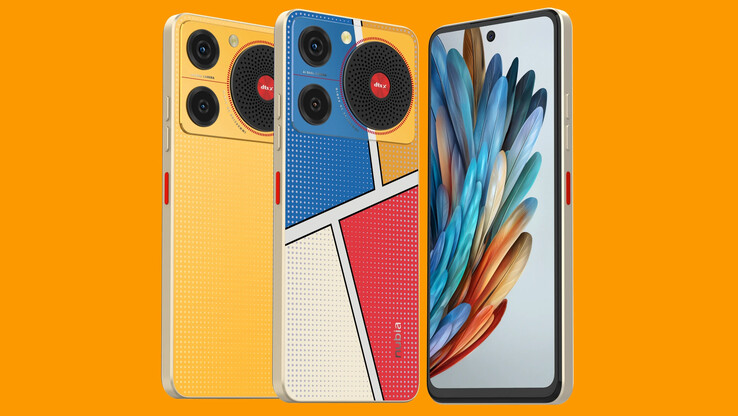









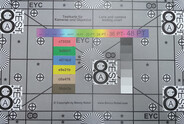



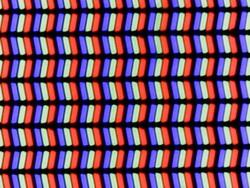
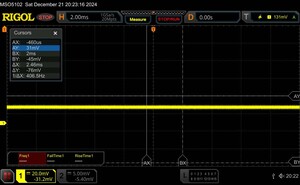


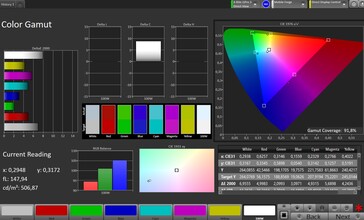
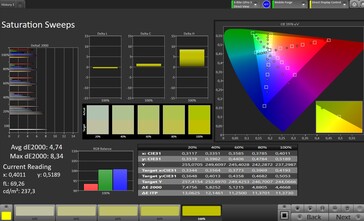
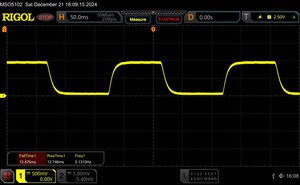
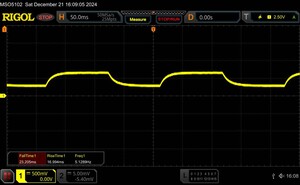
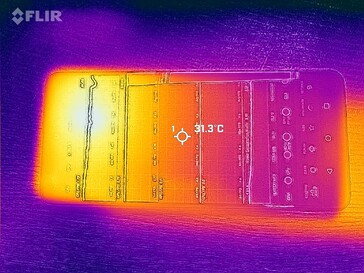
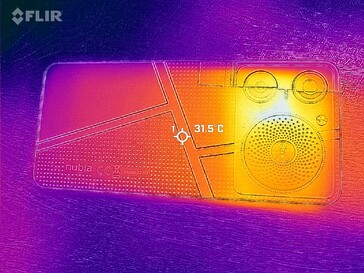
 Total Sustainability Score:
Total Sustainability Score: 


